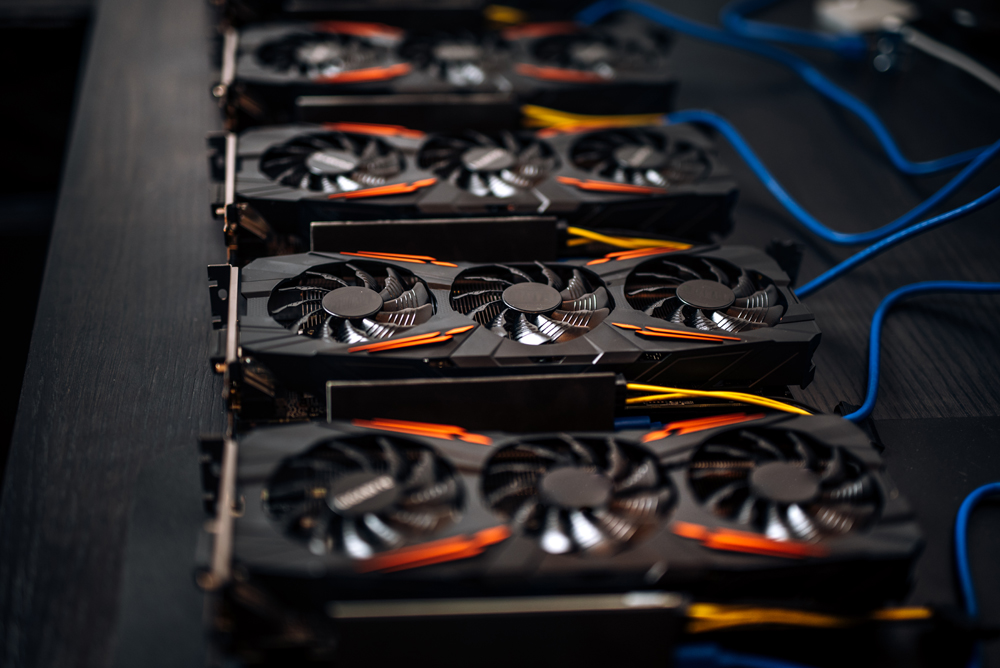The global GPU shortage has been a significant issue for gamers, tech enthusiasts, and anyone purchasing a computer over the past two years. With the massive demand for graphics cards due to the rise of cryptocurrency mining, many major retailers were left with empty shelves and sky-high prices. Even the secondhand market was affected, with prices for used GPUs reaching all-time highs. You may be asking, “is the GPU shortage over?” And we’re here to give you an answer!

Table of Contents
GPU Shortage Overview
The GPU shortage is a problem that has been affecting gamers and tech enthusiasts all over the world. It’s caused by too many people wanting to buy graphics cards but not enough of them being made. This means there aren’t enough GPUs for everyone who wants one, so some people have to wait longer than others before getting their hands on one. It’s like when you go to the store on Black Friday, and there’s only one TV left, but a hundred people want it.

Causes of the GPU Shortage
- The rise of crypto mining caused the GPU shortage. Crypto miners use special software to solve complicated math problems to earn digital money. To do this, they need powerful graphics cards, which are in short supply now. So even though regular people want GPUs for gaming or other uses, miners buy them up first, making it harder for everyone else to find one.
- The increasing popularity of gaming and other tech-related activities has led to a surge in demand for gaming GPUs. Most gaming laptops and PCs require powerful graphics cards to run the latest games.
- Supply chain disruptions due to the COVID-19 pandemic have also contributed to the shortage. The pandemic has caused delays in production and shipping, making it difficult for retailers to keep up with demand.
- There was also a chip shortage due to the pandemic, which further exacerbated the GPU shortage.
- Scalpers have been taking advantage of the situation by buying large quantities of GPUs and reselling them at inflated prices.
Impact of the GPU Shortage
Many gamers and tech enthusiasts have been unable to purchase the graphics cards they need due to limited availability, while those who can find them often face inflated prices due to scalpers. This has resulted in frustration among many consumers and a decrease in overall sales for manufacturers.

Increased Demand for GPUs
Because of the COVID-19 pandemic, many people worked from home and needed to upgrade their computers. Supply chain disruptions and chip shortages also played a huge role. These factors have aided in ballooning the graphics card market and making it difficult for regular customers to find affordable graphics cards.
Limited Supply of GPUs
Manufacturers could not produce enough GPUs without the proper chips to meet the current demand. Their hands were tied, and they had to wait for the chip shortage to be resolved before producing more GPUs. This has caused a bottleneck in the supply chain and made it difficult for retailers to keep up with demand.

Price Increases for GPUs
If you were looking to purchase a prebuilt gaming PC or laptop in 2021, you might have noticed that the prices are significantly higher than in 2020.
In the first quarter of 2021, prices for popular graphics cards rose significantly due to limited availability and increased demand. For example, Nvidia’s RTX 3080 was selling for around $1200 in January, but by April, it had risen to over $2,300.
Another example is the AMD 6000-series card cost around $650 in November 2020 when they were released, but they sold out instantly, and scalpers were charging up to $1500 the next day. This has resulted in frustration among many consumers and a decrease in overall sales for manufacturers.

Is the GPU Shortage Over?
The GPU shortage looks to have turned a corner and is slowly starting to ease. Manufacturers have received enough chips to produce more GPUs, and retailers are beginning to restock their shelves. Prices are also starting to come down, although they are still higher than pre-pandemic levels.
Overall, the GPU shortage is not over yet, but it looks like it will be soon. With increased production and availability of chips, manufacturers should be able to meet the current demand for GPUs soon.
Other Factors Affecting the End of the GPU Shortage
As the supply chain has begun to recover, manufacturers have been able to ramp up the production of GPUs. Additionally, scalpers have become less active due to increased competition from legitimate retailers, which has helped to reduce prices. Finally, introducing new technologies such as ray tracing and AI-based rendering has also helped to increase demand for GPUs, further helping to alleviate the shortage. All these factors have contributed to the end of the GPU shortage.
1. Manufacturers of Graphics Cards Have Increased Production: Nvidia, AMD, and other major manufacturers have been ramping up production of their graphics cards to meet the high demand. This has resulted in a steady increase in availability on the market.
2. Scalpers Have Become Less Active: Scalpers have become less active due to increased competition from legitimate retailers, which has helped to reduce prices and make GPUs more accessible for regular consumers.
3. Decreased Demand for Cryptocurrency Mining: The rise in popularity of cryptocurrency mining has caused an increase in demand for GPUs, but this demand has decreased as more miners switch to other forms of digital currency.
4. Improved Retailer Competition: With more retailers competing for customers, it has become easier for consumers to find GPUs at reasonable prices without resorting to scalpers or other third-party sellers.
5. Improved Availability of Components: The components used in GPU manufacturing have become more readily available, allowing manufacturers to produce more graphics cards with fewer delays or shortages.
All these factors have contributed to the gradual end of the GPU shortage. While it may take some time for prices to return to normal levels, it looks like the worst of the shortage is over, and consumers should be able to find GPUs more easily in the near future.
Stabilization of Prices
It is difficult to predict the exact price of graphic cards since 2023 has just begun, but prices will likely have stabilized by the second or third quarter. With increased production from major manufacturers and improved competition from retailers, the supply of GPUs should be more consistent, and prices should become more reasonable. It is also possible that the market will become saturated with GPUs as manufacturers continue to boost production, resulting in lower prices. Overall, it is likely that GPU prices will remain relatively stable in 2023 compared to the last two years.
Wrapping Up
It appears that the worst of the GPU shortage may be over. Major retailers such as Amazon and Newegg have started to restock their shelves with graphics cards from AMD and Nvidia, and prices are slowly dropping. This is excellent news for gamers waiting patiently for more affordable GPUs.
With the release of Next-Gen RTX 4000 series cards from Nvidia and the upcoming AMD GPUs, the graphics card market is finally starting to stabilize.
It is important to note that the GPU shortage is not entirely over yet, and graphics card prices may still fluctuate in the short term. And it is important to stay informed about the latest developments in the GPU market and be prepared for any sudden changes in pricing.



Recent Comments